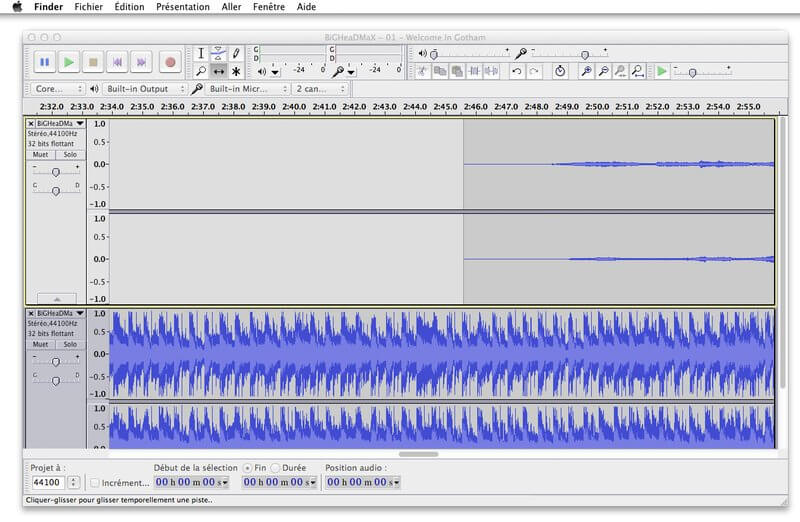

Some of these devices can be used in Audacity, while others are stand-alone devices from which you can import your content onto your computer.ģ) To import content, you can go to File > Import > Audio, and then search in your system's file explorer, or you can drag and drop a file into Audacity from an open window.Ī. A list of available devices can be found here. Hope College's Library Tech Desk regularly rents out audio recording devices that you can use in Audacity. Below this you will see a drop-down menu that says "Core Audio." Make sure that whatever device you are using to record is selected in the menu directly to the right of "Core Audio."

At the top of the screen you will see a series of buttons to pause, play, stop, etc. If you are planning to record content directly within the app instead of importing pre-recorded tracks, make sure that your microphone is properly working before you begin recording. Check out the Downloading Audacity documentation below on this page for more help.Ģ) Launch the app. It is loaded onto most computers across Hope College's campus, but if you are planning on using a personal computer, you must download it from the app's official website. You can even apply a filter that erases the voice in a song.Īs if this wasn't enough, you can add all types of 32-bit external VST plugins, and also reproduce MIDI files.1) Determine where you will be using Audacity. Its power lays in the possibility of applying changes to any section of the audio file you want, and as well as its multi-track editing. Thanks to the amount of available filters and effects, Audacity is much more versatile than it first seems.īesides all this, it allows you to adjust the level of noise on an audio track, modify the shape of the wave to adjust it to your needs, or add all kinds of post-process effects. It also includes all kinds of basic editing tools like cutting, copying, erasing. It supports the majority of audio formats, such as wav, mp3, Ogg, wma, ac3, flac and aiff. It is a free, open-source software with GNU licensing to record and edit audio, working directly with the graphics of the sound waves.

There are many tools in this category, but few so comprehensive and efficient as Audacity.


 0 kommentar(er)
0 kommentar(er)
